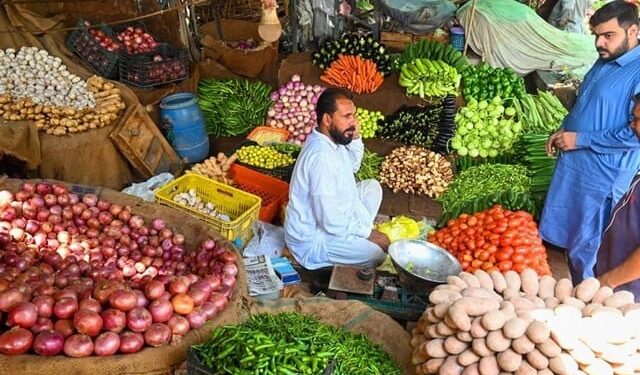Islamabad – The impact of rising petroleum prices has begun to echo throughout the economy, with inflation increasing during the third week of the new fiscal year 2025–26. A report released by the Federal Bureau of Statistics (FBS) has revealed that the Sensitive Price Index (SPI), which tracks the weekly fluctuation in prices of essential commodities, recorded a weekly increase of 0.38%. As a result, the overall annual inflation rate now stands at -1.61%, reflecting the ongoing volatility and mixed trends in price behavior across the country.
This steady weekly rise has sparked concern among consumers and analysts alike, as the growing cost of living, particularly driven by energy and food sectors, threatens household budgets—especially for lower and middle-income families.
Understanding the Weekly Inflation Trend
According to the latest statistics released by the Federal Bureau of Statistics, the prices of 22 out of 51 essential commodities monitored showed an increase during the week under review. Meanwhile, 9 items saw a decrease in prices, and the remaining 20 items remained stable.
This mixed trend indicates that while certain commodities are becoming more expensive, some seasonal and imported items are seeing price relief—though the overall balance is tilting towards inflation.
Petroleum Products Leading the Surge
Among the primary contributors to inflation were petroleum products. The report states:
- High-Speed Diesel (HSD): The price increased by 4.15%, which significantly affects transportation costs, supply chains, and ultimately food prices.
- Petrol: The price surged by 2% in a single week, impacting commuting costs and logistics across the country.
This upward movement in fuel prices has a cascading effect across various sectors of the economy, especially transportation, agriculture (through tractor fuel use), and the industrial sector.
Food Inflation – Key Commodities Affected
Inflation in food prices is particularly concerning for the general public. According to the FBS:
- Chicken: Increased sharply by 8.31% in one week, attributed to higher demand and supply chain inefficiencies.
- Eggs: Witnessed a price rise of 5.87%, usually due to seasonal changes and increased demand.
- Onions: Rose by 1.76%, typically due to seasonal fluctuation and supply chain costs.
- Potatoes: Recorded a 1.46% increase, likely linked to higher transport and storage expenses.
- Garlic: Experienced a 1.70% rise, possibly due to import dependency and reduced domestic yield.
These increases put additional pressure on households already struggling to make ends meet.
Items That Became Cheaper
Despite overall inflation, a few essential commodities saw price reductions:
- Tomatoes: Prices fell, largely due to improved seasonal harvest.
- Wheat Flour: Decreased slightly due to subsidized government programs and new local produce entering the market.
- Cooking Oil: Saw marginal reduction, thanks to improved international supply and stable import rates.
- Sugar: Declined, possibly due to government crackdown on hoarding and overstocking.
- LPG (Liquefied Petroleum Gas): Prices decreased following adjustments in global crude oil rates and stable supply.
Stable Commodities
The report further noted that prices of 20 items remained unchanged, showing some degree of stability in consumer goods such as:
- Fresh fruits (apples, bananas)
- Dairy products (milk, yogurt)
- Pulses (lentils, chickpeas)
- Spices (red chili powder, turmeric)
This category provides some respite to consumers; however, the risk remains if upstream supply chains are affected by fuel costs.
Macroeconomic Context: Why Are Prices Rising?
Inflation is a multi-faceted issue in Pakistan, with various contributing factors:
- Fuel Price Hikes: Recent revisions in fuel prices—especially diesel and petrol—directly raise the cost of goods and services across the board.
- Supply Chain Disruptions: Monsoon floods in some regions, high transportation costs, and inadequate cold storage facilities affect the availability and pricing of perishable items.
- Global Commodity Prices: International oil, food, and gas prices heavily influence domestic pricing.
- Currency Depreciation: A weakening Pakistani Rupee increases the cost of imports, which trickles down to consumers.
Government Measures to Control Inflation
The government of Pakistan has undertaken several initiatives to manage inflationary pressures:
- Subsidies on Wheat and Utility Stores: Providing relief through subsidized flour and household items via Utility Stores.
- Import Facilitation: Temporary tax relief and import quota for essential food items to stabilize local prices.
- Monitoring and Enforcement: Crackdown on profiteering, hoarding, and black marketing through price monitoring committees.
- Targeted Fuel Adjustments: Though prices are rising, authorities are trying to minimize adjustments or offer targeted fuel subsidies to industries and public transport.
However, many economists argue that these measures need to be complemented with long-term structural reforms in the agriculture and energy sectors.
Expert Insights on Inflation Trends
Economic analysts have expressed concern about the recent trend:
“The weekly inflation increase, although small, reflects the creeping pressure on consumers that can snowball if not addressed through proper fiscal management,” said Dr. Asim Khan, senior economist at the Pakistan Institute of Development Economics (PIDE).
“Unless the government ensures fuel price stability and enhances agricultural productivity, inflation could become more widespread and persistent,” he added.
Impact on the Common Man
For a majority of Pakistani households, especially those falling under lower-income brackets, even a small increase in food and fuel prices can significantly affect monthly budgets.
- Increased transportation fares
- Higher electricity bills (due to increased diesel costs for power generation)
- Reduced purchasing power
- Difficulty in affording nutritious food and basic healthcare
Looking Ahead: What to Expect
Experts anticipate that inflation could remain volatile in the coming weeks unless fuel prices stabilize and the government introduces comprehensive fiscal reforms. The FBS’s upcoming reports will be crucial in evaluating how effectively inflation is being managed.
- A possible drop in international oil prices may bring some relief.
- Monsoon rains could impact agricultural yield, pushing up prices of vegetables and grains.
- Currency stability will be key in managing import-based inflation.
Conclusion: A Cautious Outlook for Economic Stability
The third week of the new fiscal year has highlighted the challenges Pakistan faces in maintaining price stability. While the increase of 0.38% in weekly inflation may seem modest, it is a signal that upward pressures persist across energy and food sectors. Continued vigilance, proactive policymaking, and responsible fiscal behavior are essential to safeguard the purchasing power of the common citizen.
As the government navigates the difficult terrain of global economic headwinds, domestic reform and transparent governance will remain the cornerstones for ensuring long-term economic stability and inflation control in Pakistan.

























